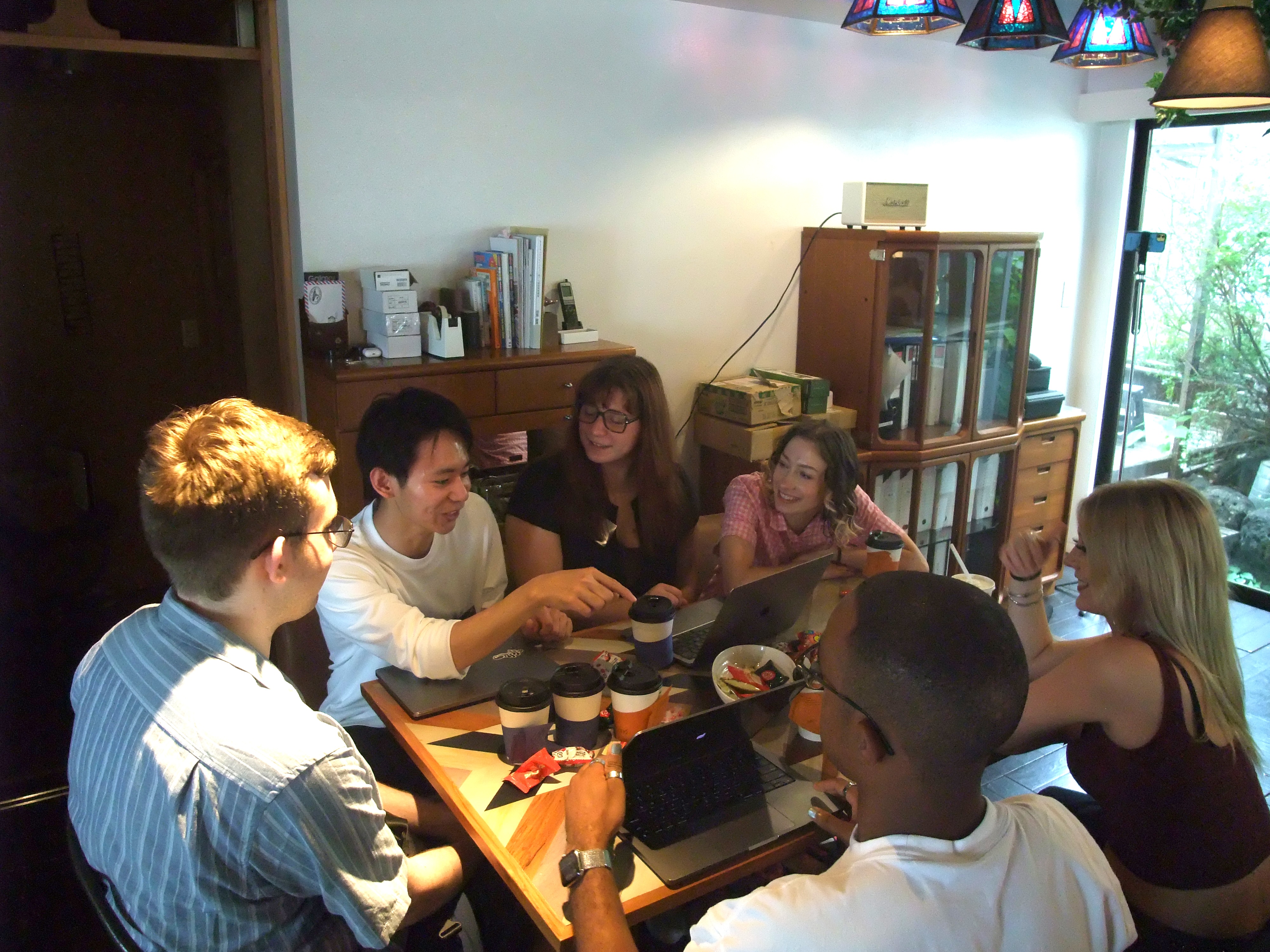Hello, I’m Miho, a student intern at Archeco!
In the previous "Workshop Edition," we shared how DePaul University students took on the challenge of UX/UI design while using AI tools.
Together, we explored how to make the most of these tools and what still needs to be done by human hands—
we experienced the “creation” part of design side by side.
But that wasn’t the end.
“How will UX/UI designers evolve with the rise of AI?”
We wrapped up with a discussion session where everyone came together to think about the future image of designers.
How should we engage with AI?
The first topic was our impressions of AI and the issues surrounding it.
What surprised me most was that many of the students were already expanding their thinking to include environmental and social issues.
When someone asked,
“AI is convenient, but is all the electricity and server energy consumption environmentally friendly?”
it hit me—
“They’re not just looking at the tool, they’re considering the whole context.”
It was a bit of a culture shock.
Among Japanese students,
conversations often start with questions like,
“Is AI cheating?” or “Isn’t it scary to lose jobs to AI?”—
focused on ethics and morality.
But DePaul students had a broader view,
considering the system-wide impact of AI.
Their professors were also cautious in their stance toward AI.
One professor said:
“Honestly, I learned about UIZARD for the first time during this workshop.
The world is becoming more convenient,
but I want students to be able to think for themselves:
‘Why use this tool?’ and ‘How much should we rely on it?’”
Another professor noted:
“I’m worried that convenience will erode our basic observational and hands-on skills.
First and foremost, it’s about thinking for yourself—that’s what really matters.”
I completely agreed with that.
Using AI isn’t wrong.
But it should never become a reason to stop thinking.
Having a mindset that doesn’t let you get swayed by the tools—is important not just for designers,
but for anyone working in the future society.
Will AI take over the designer’s job?
Surprisingly, there were few pessimistic voices.
In fact, many were optimistic—emphasizing that the role of humans won’t disappear.
One student said:
“AI is good at quickly finding answers,
but it can’t come up with the questions.
Design isn’t about providing the answer, it’s about thinking through the problem—
and that’s the human part.”
Another shared:
“When you get stuck, think hard, and struggle,
you become more attached to what you’re creating.
That’s when a truly personal design emerges.”
I totally related to that sense of value in the struggle.
Of course, there were also practical voices:
“People don’t need to do every task.
Let AI handle the repetitive stuff so we can focus on the really important thinking.”
This sense of balance—“efficiency is needed, but not everything”—
felt very realistic and grounded for students.
Professors added:
“UX/UI designers will still be needed. But their roles will change.”
“With AI, there may be fewer hands-on designers,
but those who identify problems and design user experiences
will become even more necessary.”
This really spoke to the core value of design as a profession.
What the students gained from the workshop
For the students, this workshop wasn’t just about using AI tools—
it was a chance to understand how their current learning applies in the real world.
One student said something especially memorable:
“Seeing how UX designers actually think and work
helped me realize that our university assignments do have meaning.
I feel more motivated to keep going!”
On the topic of AI use:
“AI is useful when used correctly,
but I’m still hesitant to rely on it completely.
We need to consider environmental and social impacts too.”
There were many voices like this, showing thoughtful caution.
The professors also gave warm feedback:
“Being able to experience the actual process in a company
was a major learning opportunity for the students’ career paths.”
“Experiencing Japanese hospitality was also valuable.
They even really enjoyed the snacks!”
What does the UX/UI designer of the future look like?
Through the entire discussion,
a common understanding emerged:
Even in the age of AI, the role of thinking humans will remain essential.
Students said:
“Design is about solving someone’s problem.
As long as it requires creativity, sensitivity, and empathy,
human work will never disappear.”
“Still, I want to decide for myself how much I use AI.
It wouldn’t feel right to just rely on it without thinking.”
Teachers added:
“AI is just a tool.
Design is a human act of thinking ‘for someone else,’
and that will remain our job moving forward.”
Everyone seemed to share hope for the future of design.
In closing
What I strongly felt from this discussion was:
It’s not about “AI will do this,”
but rather:
“How do we want to live in an age where AI exists?”
That’s the perspective we need.
Honestly, I often stop at “AI is convenient” in daily life,
but hearing what the students and professors had to say made me realize—
I need to seriously think about “how to use it well.”
What will be expected from the UX/UI designers of the future
is not just the speed to adopt new tools,
but the ability to understand the broader context and generate meaningful experiences.
Students, professors, and we ourselves—
each drew our own picture of what the designer of the future might look like.
It was truly a valuable day full of learning.

